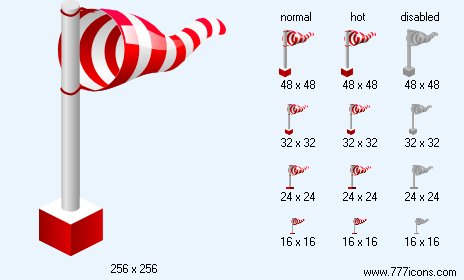


|
| ||||||||
|
|
Wind Vane Icon |
|
Image sizes: 16x16, 24x24, 32x32, 48x48, 256x256
File formats: BMP, GIF, PNG, ICO
Picking The Right Image Format In Icon Creation.
There are numerous image file formats that could be used for saving web graphics and for a relatively raw designer this can often lead to a big pain because you will need to know how to use a specific file format, offered in this article is a take on the advantages and issues of some popular image formats.If you are interested in web graphic designing or want to create graphical representations for your site, it is imperative to learn about the various image formats and their traits so that you can use the right file type for graphics. Among the most popular formats for pictures are GIF, JPEG and PNG, each one of these formats is known to have its own merits so lets talk about the advantages and disadvantages of using these file formats, the type of file that would live up to the requirements of your web page and optimizing your images for the internet.
GIF: The full form is Graphics Interchange Format; the format is by far the most popular file type. The image format is well accepted because of its image size that is very small which makes uploading less time consuming. Also like JPEG, details are not lost in this format which means you could save the graphic in a smaller size without compromising the quality of the images. GIF offers transparency support in graphics, it is the most commonly used file formats for picture designing. Unlike the other file types, scope for animation is also possible in GIF. If you wish to optimize a GIF file, it is vital to limit the file size; it is recommended that you select a 32 color palette to achieve the least possible size.
JPEG: This is the abbreviation for Joint Photographic Experts Group; the image format is generally called JPG and is often seen on websites. One of the primary pros of using this type of file is that you can store the images in true color that affords you a palette of 16 million colors; this makes the file type suitable for use with photographs and images that have detailed color range. One of the issues of using JPG is the loss of details that is encountered each time the image is saved; this means that the graphic is marred by compromised clarity and many information may be lost. Unlike the GIF format, transparency support is not offered in this file format. If you are using a superior image editing program like the Adobe Photoshop, you will have the liberty to pick the quality and the size of the JPG file ; however, it is imperative to realize that a lower resolution equates to a smaller size, which is simple to upload.
PNG: Is stands for Portable Network Graphics and is a relatively new file format. PNG is available in two versions types; PNG-8 which offers 8 bit color format and the PNG-24 which offers 24 color graphics. PNG-8 can compress graphics with wonderful detail and without the usual loss of details experienced in GIF files; this leads to better image quality and quick upload time. However, PNG-24 is not as effective as JPG when you have to store pictures and other images that need a vaster color range. The file type is loss-less; this means that the picture retains its quality and clarity. PNG-24 offers the transparency feature and you can use varying degrees of the transparency feature in this image type. In this format the pictures are better looking because they do not have the tell tale jagged edges when placed in relation to a contrasting color backgrounds like GIF files.
Copyright © 2006-2022 Aha-Soft. All rights reserved.
|

